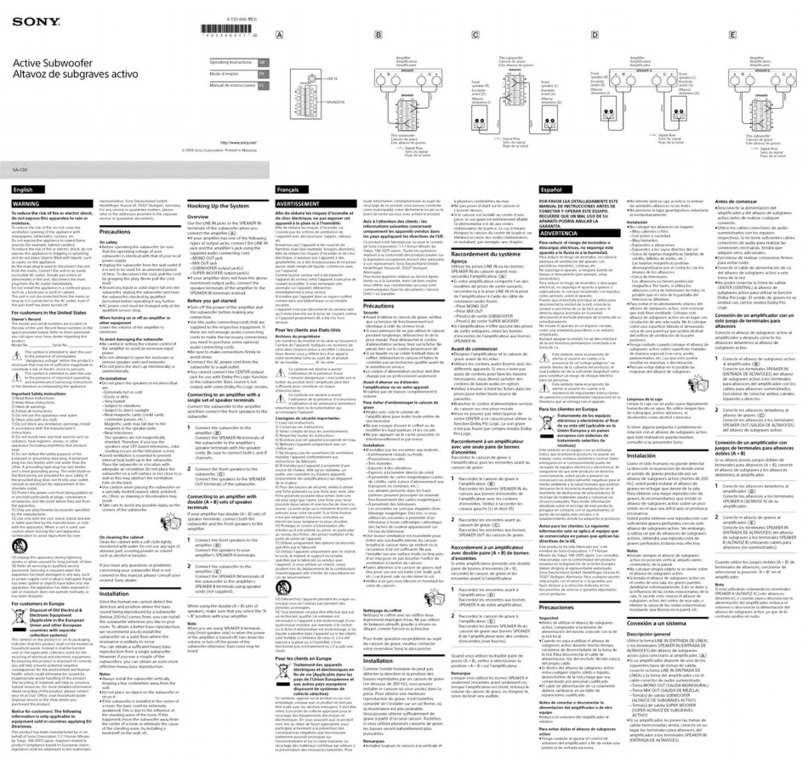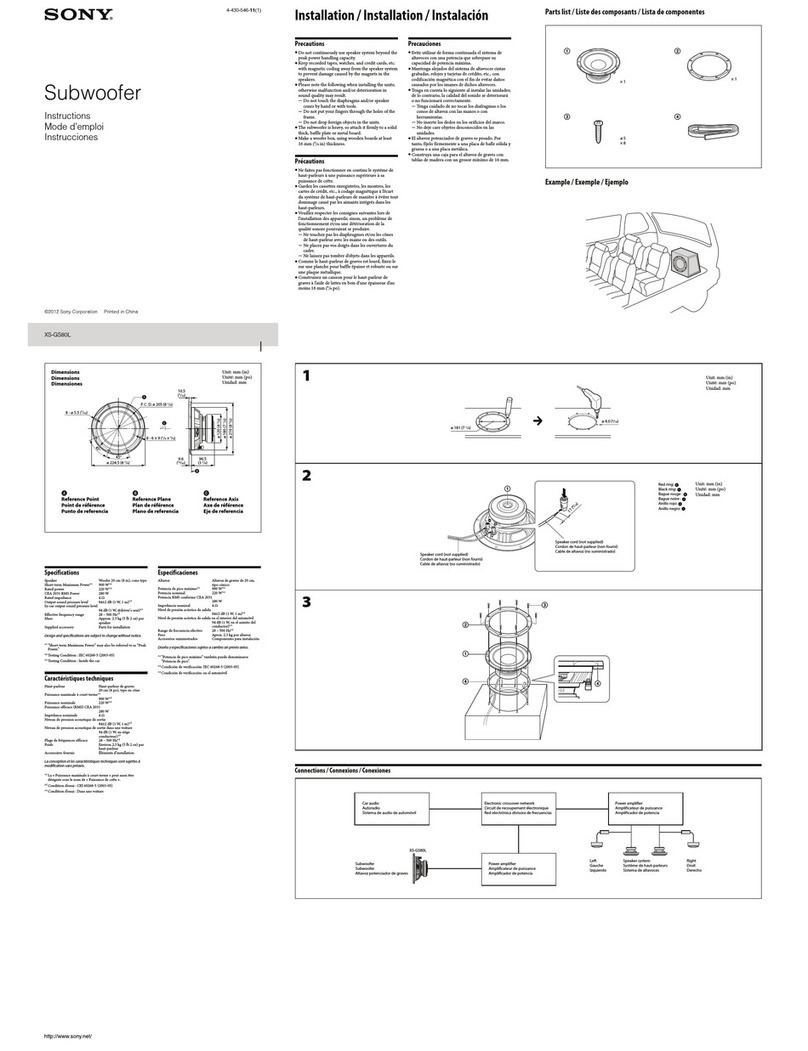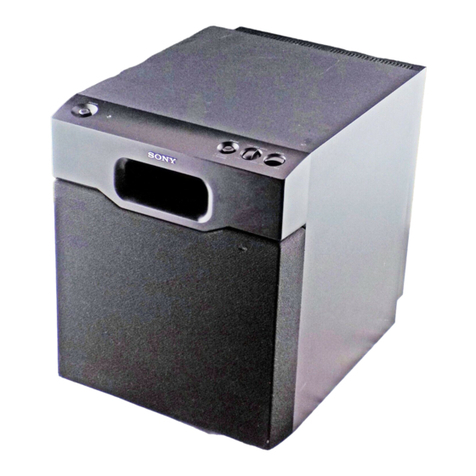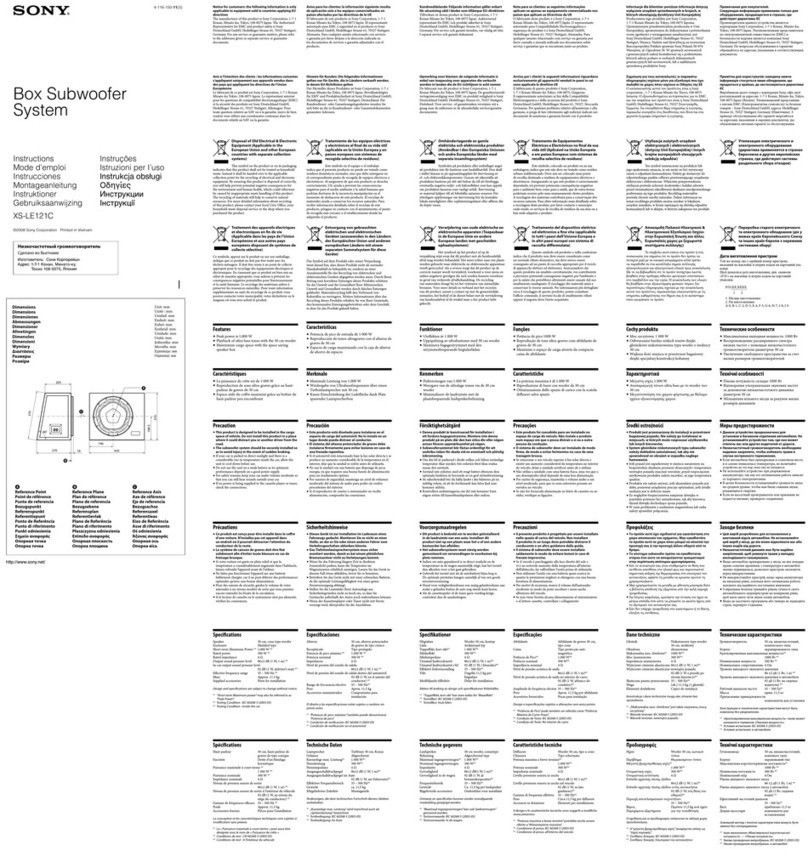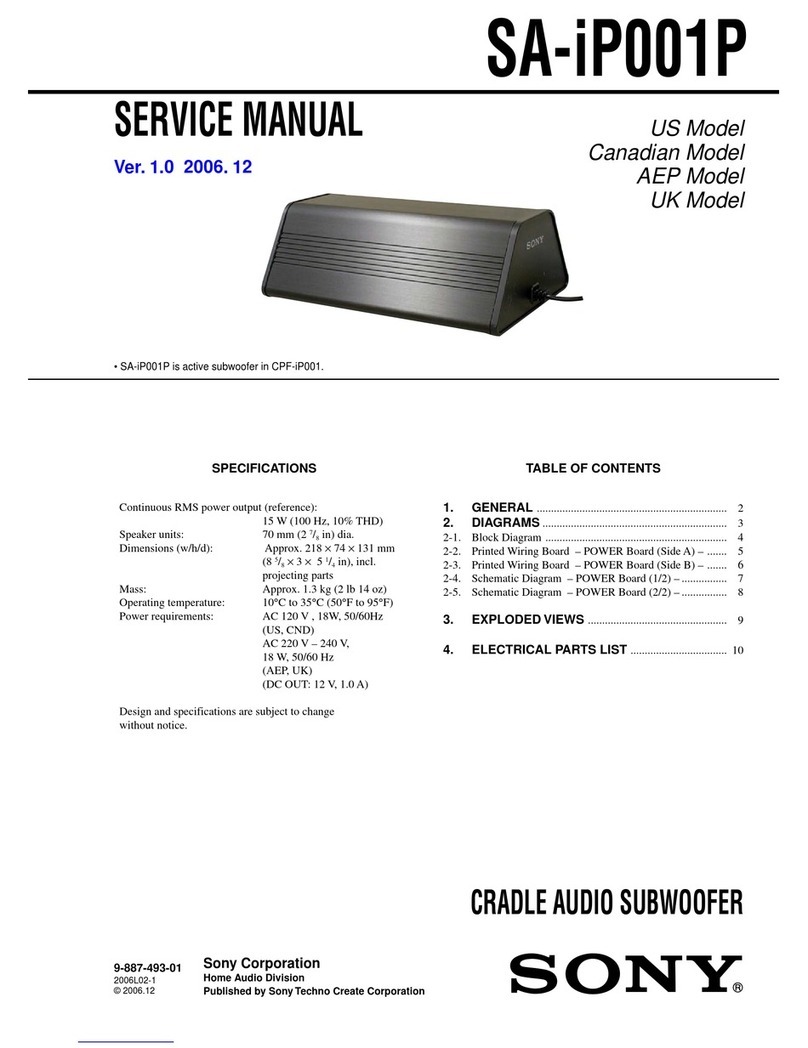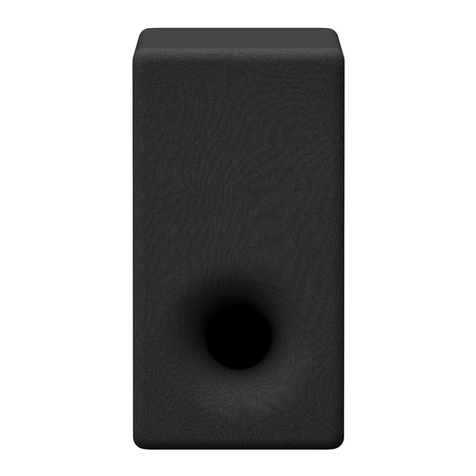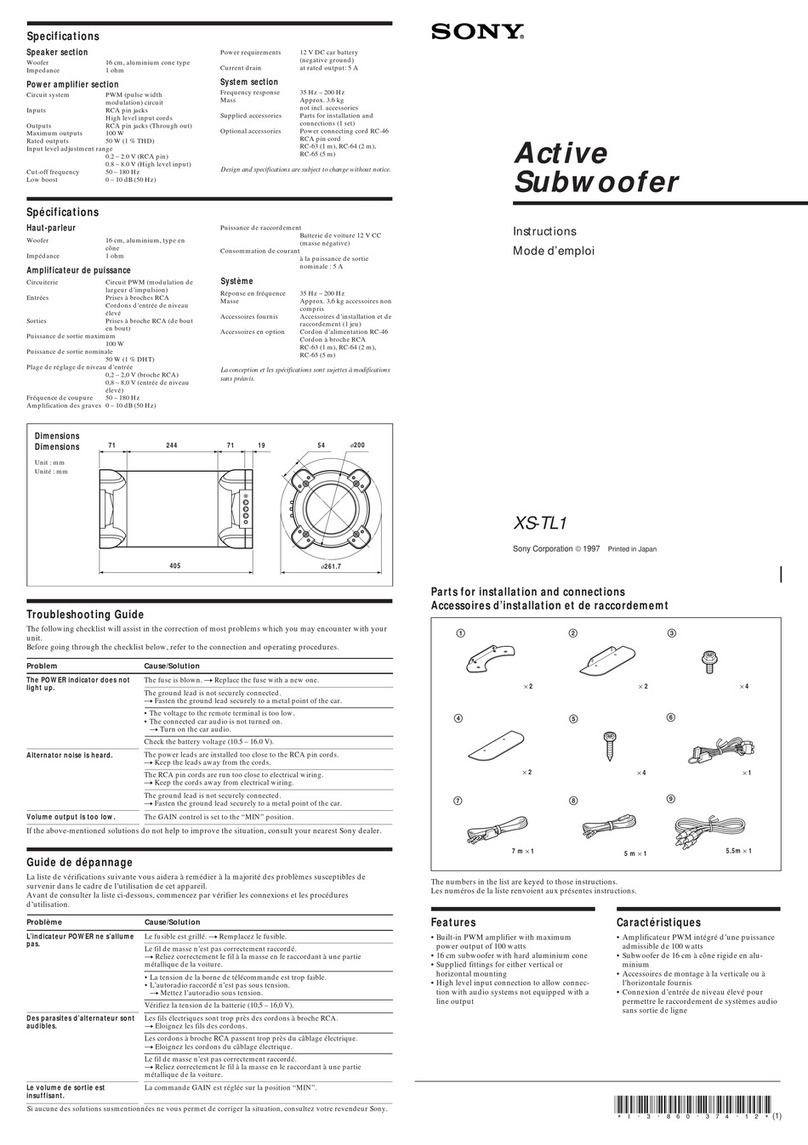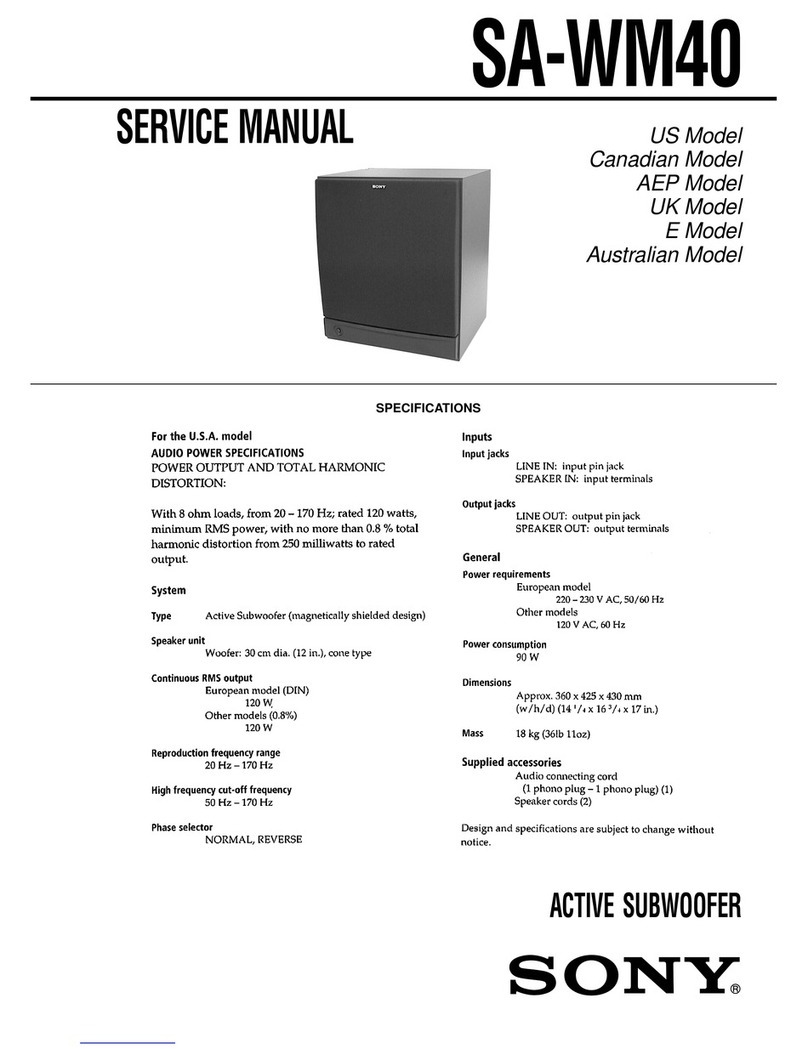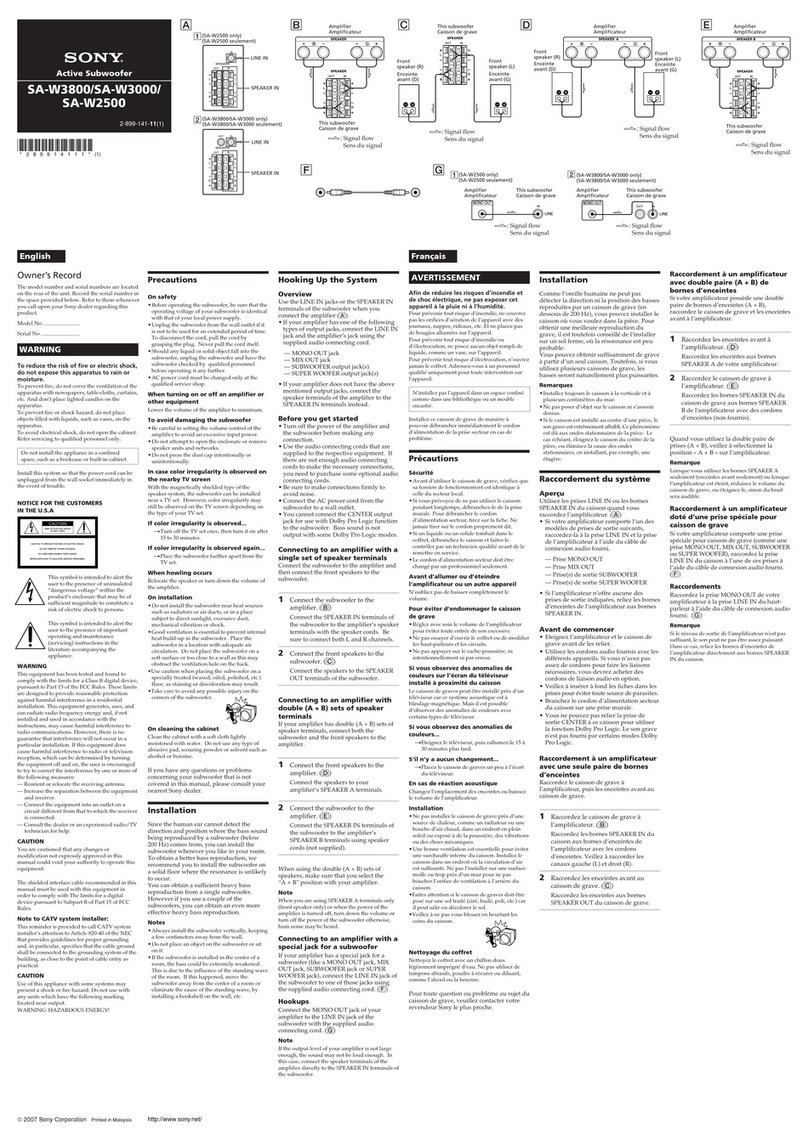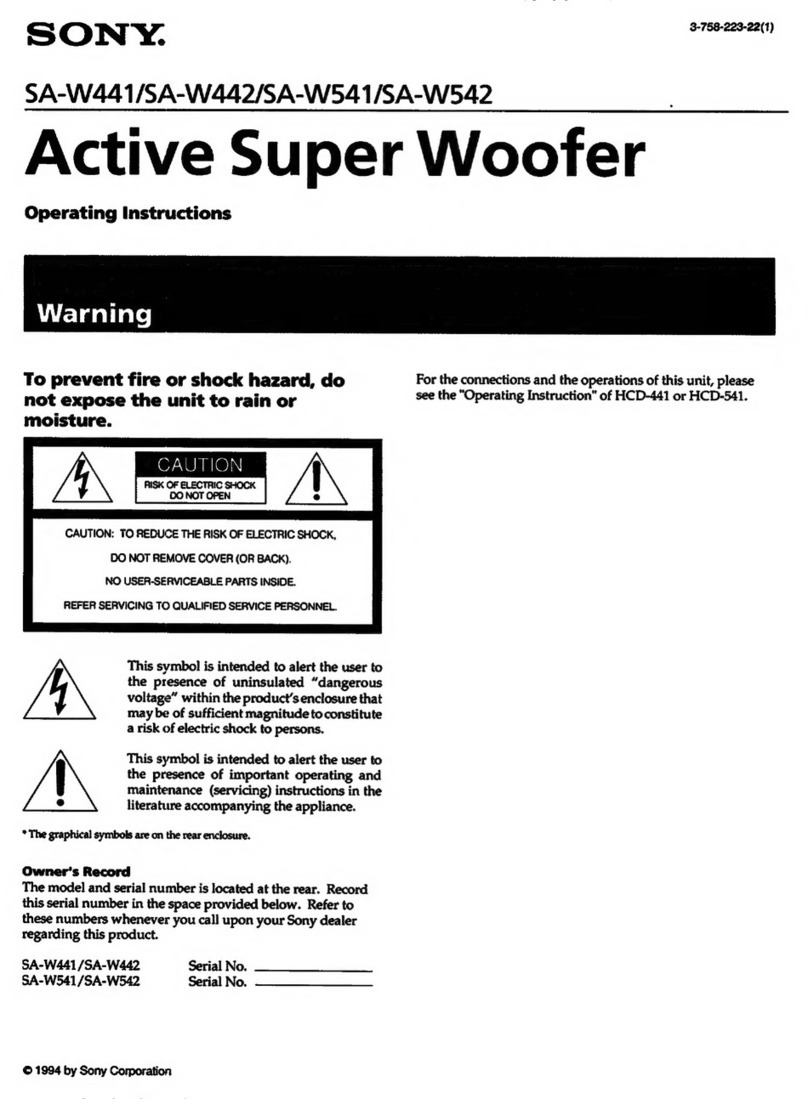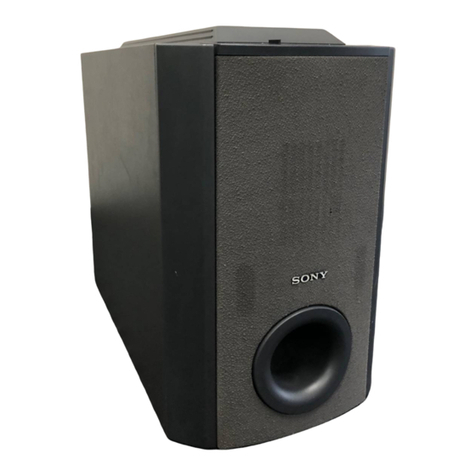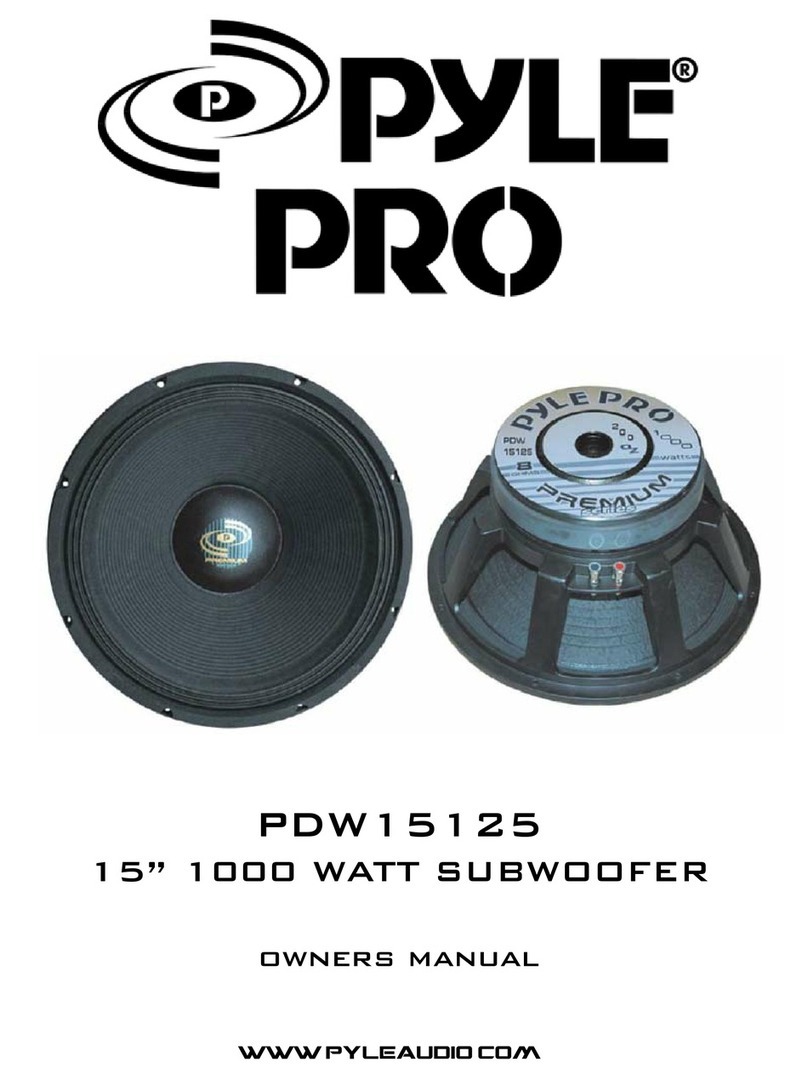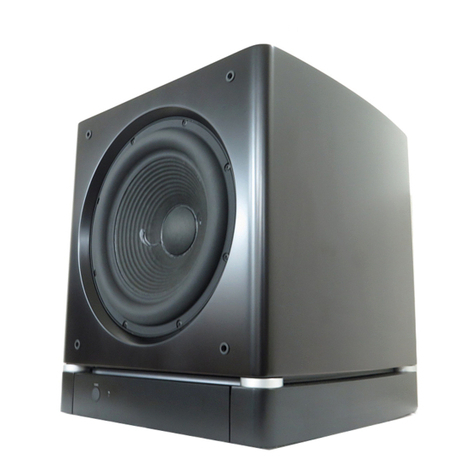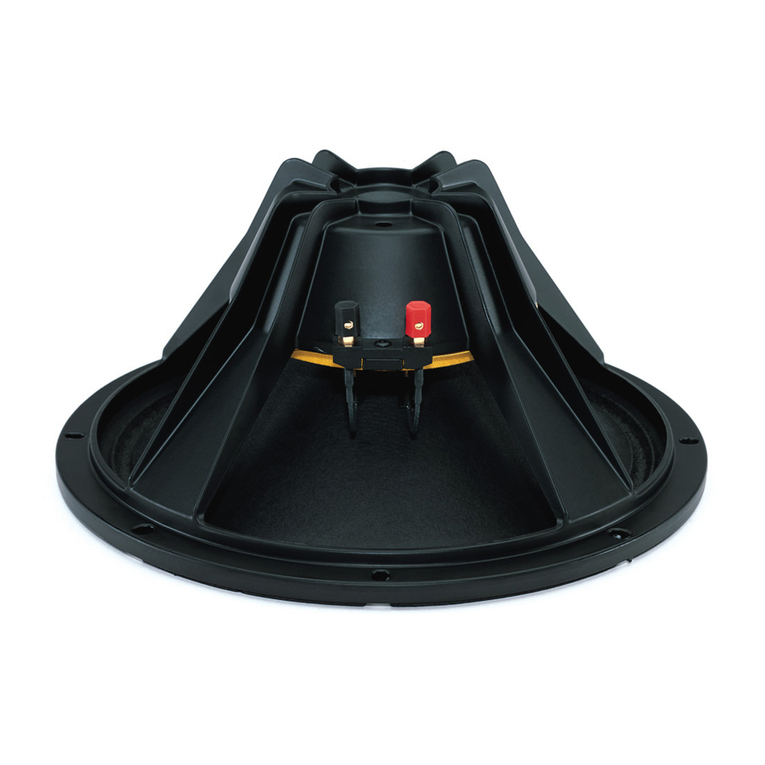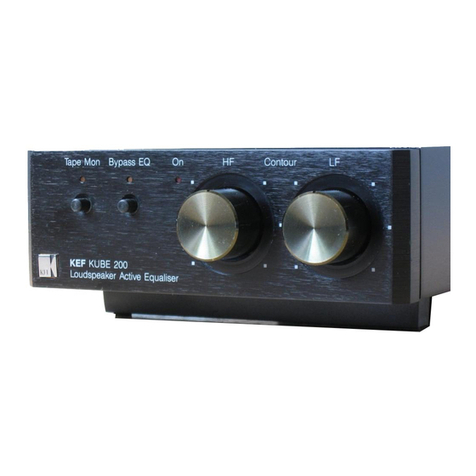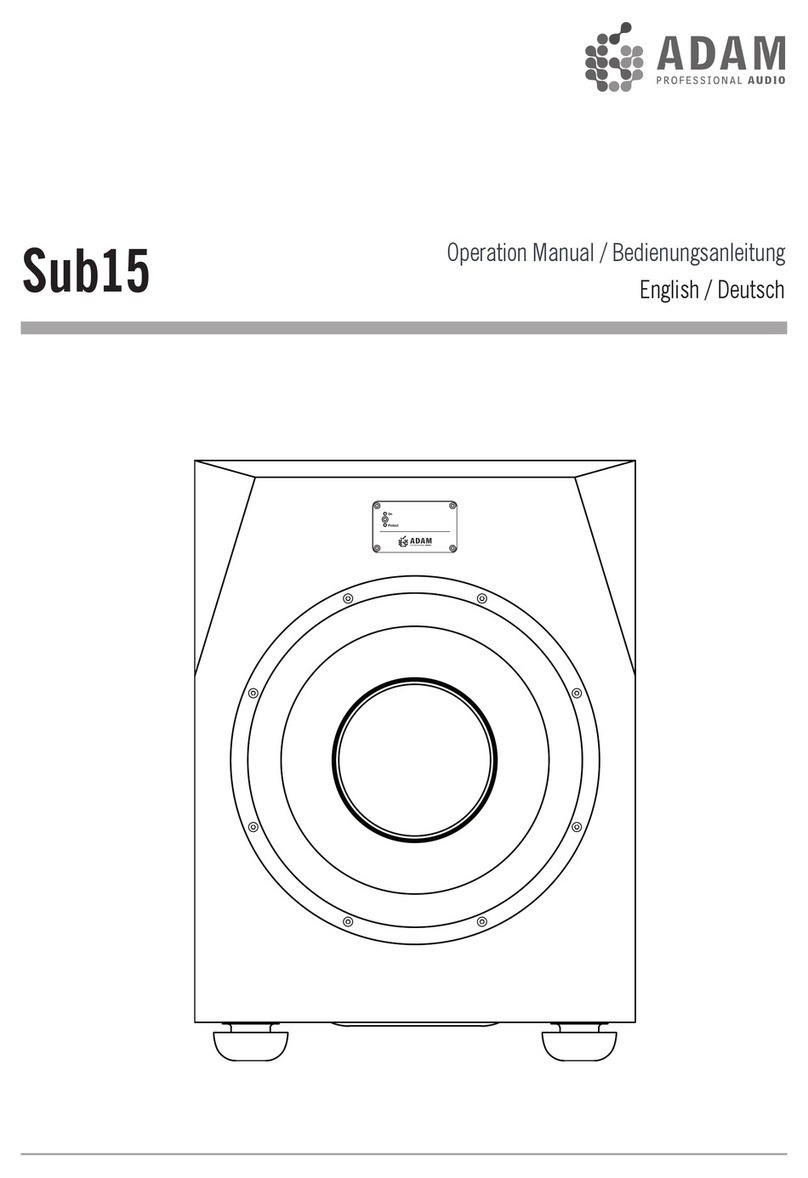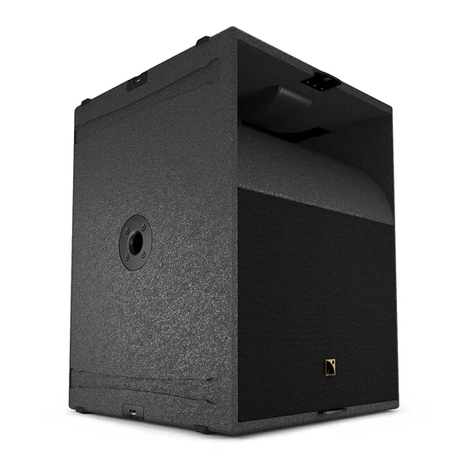Additional Information
10GB
Troubleshooting
If you experience any of the following difficulties while
using the woofer, use this troubleshooting guide to
help you remedy the problem. Should any problem
persist, consult your nearest Sony dealer.
There’s no sound.
,Check that this woofer and components are
connected correctly and securely.
,Turn LEVEL clockwise to turn the volume up.
,Select SPEAKER or LINE with IN PUT selector.
,Reset the level.
The sound has suddenly stopped.
,The speaker cords may have short-circuited.
Connect the cords properly.
The sound is distorted.
,The input signal is imperfect.
,The input signal level is too high.
,Set the CUT OFF FREQ as high as possible
when playing back the Dolby digital (AC-3).
Severe hum or noise is heard.
,Connect the ground wire of the turntable
properly.
,The contacts between the plugs of the
connecting cords and the corresponding jacks
have not been made properly. Connect the
plugs firmly.
,The audio system is picking up some noise
from a TV set. Move the audio system away
from the TV set or turn the TV set off.
Precautions
On safety
•Before operating the woofer, be sure that the operating
voltage of your woofer is identical with that of your local
power supply.
•Unplug the woofer from the wall outlet if it is not to be
used for an extended period of time. To disconnect the
cord, pull the cord by grasping the plug. Never pull the
cord itself.
•Should any liquid or solid object fall into the woofer,
unplug the woofer and have the woofer checked by
qualified personnel before operating it any further.
•AC power cord must be changed only at the qualified
service shop.
When turning on or off an amplifier or other equipment
Lower the volume of the amplifier to minimum.
To avoid damaging the woofer
•Be careful in setting the volume control of the amplifier to
avoid an excessive input power.
•Do not attempt to open the enclosure or remold speaker
units and networks.
In case color irregularity is observed on the nearby TV
screen
With the magnetically shielded type of the speaker system,
the speakers can be installed near a TV set. However, color
irregularity may still be observed on the TV screen
depending on the type of your TV set.
If color irregularity is observed...
tTurn off the TV set once, then turn it on after 15 to 30
minutes.
If color irregularity is observed again...
tPlace the speakers further apart from the TV set.
When howling occurs
Relocate the speaker or turn down the volume of the
amplifier.
On installation
•Do not install the woofer near heat sources such as
radiators or air ducts, or in a place subject to direct
sunlight, excessive dust, mechanical vibration or shock.
•Good ventilation is essential to prevent internal heat
build-up in the woofer. Place the woofer in a location
with adequate air circulation. Do not place the woofer on
a soft surface or too close to a wall as this may obstruct the
ventilation hole on the back.
On cleaning the cabinet
Clean the cabinet with a soft cloth lightly moistened with
water. Do not use any type of abrasive pad, scouring
powder or solvent such as alcohol or benzine.
If you have any questions or problems concerning your
woofer that is not covered in this manual, please
consult your nearest Sony dealer.
